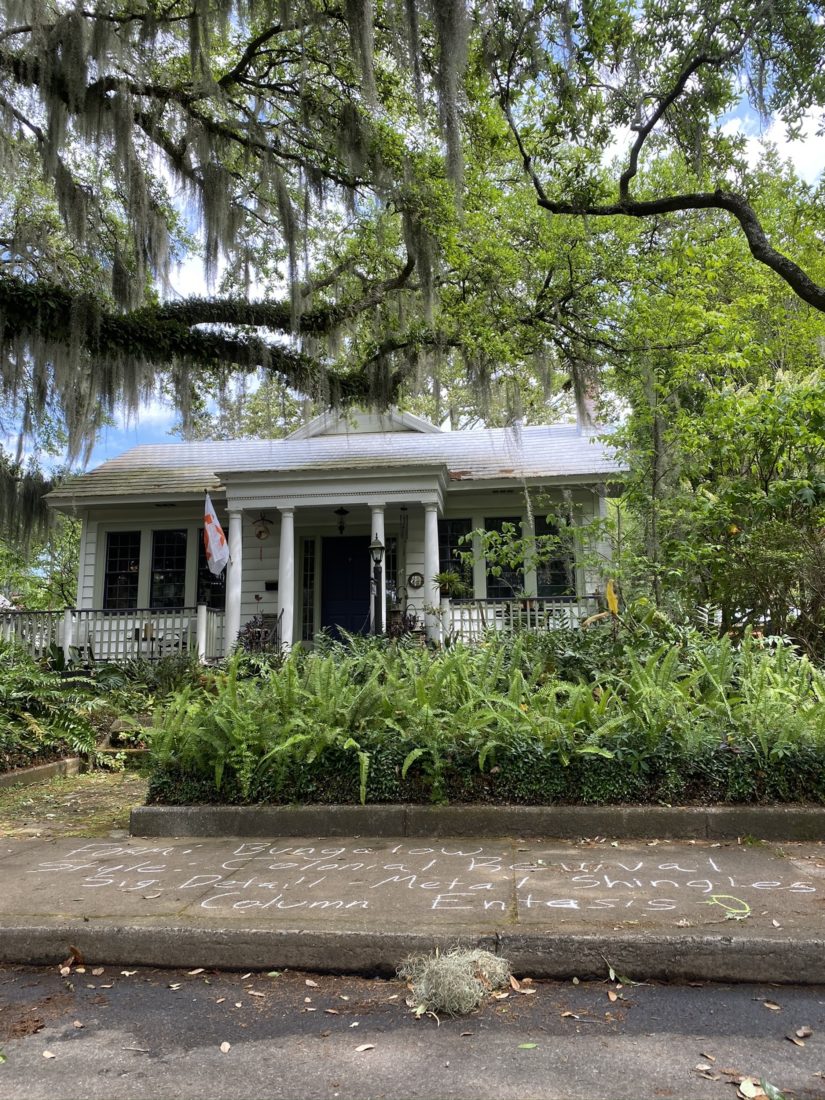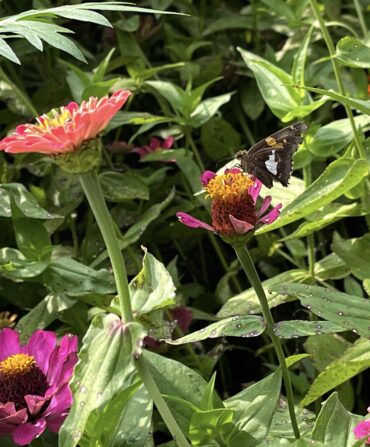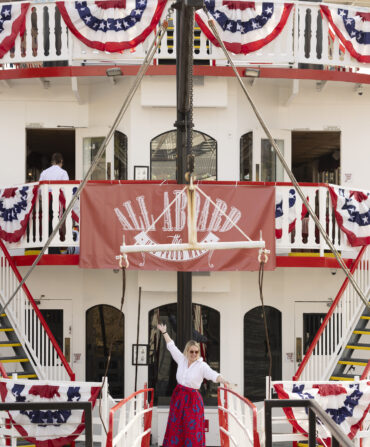The sand-colored, stucco home sports a pool that might be the envy of Savannah’s Chatham Crescent neighborhood, cool water beckoning in the Lowcountry heat. Today, three bicyclists have stopped to admire the property—and share a bit about its history.
John Bennett, Nick Palumbo, and Robin Williams hop off their bikes at the property on the corner of Battey and 46th streets, and Williams, still wearing his helmet, bends over and writes on the sidewalk with a piece of chalk.
PRAIRIE STYLE + ENGLISH ARTS & CRAFTS, he scrawls in neon orange. Williams is the chair of architectural history at Savannah College of Art and Design, and he knows the homes of Savannah well. He keeps scribbling.
Located at 301 East 46th Street, the rough-cast-stucco home has a “generous,” open porch designed to “take in nature,” echoing early-20th-century houses designed by Frank Lloyd Wright, Williams explains as he writes. “Crazy-big” picture windows and a wide front door greet passersby. The structure blends English arts-and-crafts, American craftsman, and prairie-style designs—three related movements.
This week, Williams and crew embarked on an informal, destination-to-be-determined, bicycle journey through Savannah’s historic neighborhoods. At a time when most of America is shut in, their quest inspires exercise—of both the mind and body—and reminds neighbors, here in Savannah and elsewhere in the South, of the sense of community that is so dear to us all.
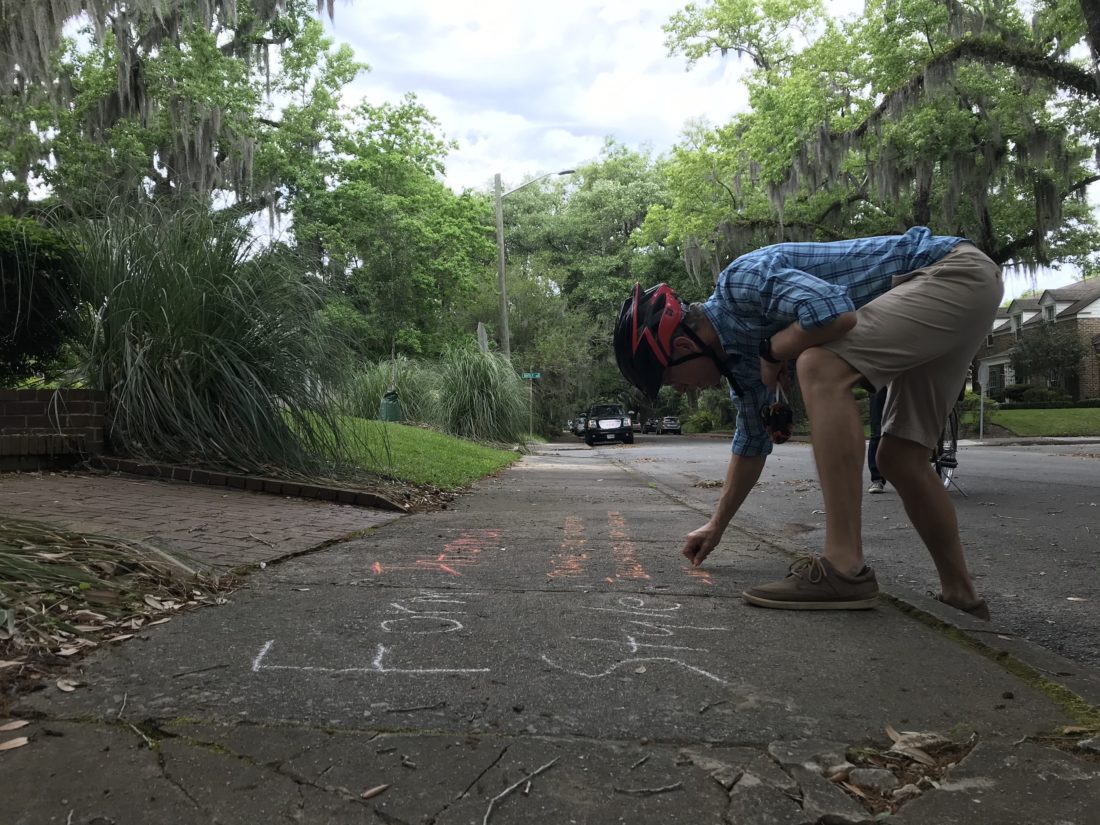
The idea sprang from children’s chalk art. When Bennett—who works at the cycling advocacy agency Georgia Bikes—strolled through the boroughs south of River Street, he noted colorful scribbles dotting the sidewalks and spied rainbows and bears peeking from windows, now hallmarks of children’s scavenger hunts in the time of the novel coronavirus. A graduate of SCAD’s historic preservation program, Bennett wondered, What if we channeled the kids’ creativity and blended it with the city’s love of architecture? What if we went house-to-house and chalked out details of our homes?
So, he pitched the idea to Williams and Palumbo. Palumbo, a city alderman, put out a Facebook feeler and quickly received close to 200 interested replies. The trio put together a list and set out by bike, riding six feet apart.
Their process is as simple as it is casual: They arrive at a house, appraise the structure, and break out the chalk. Bennett carries a broom to sweep the leaves from the sidewalk. Palumbo keeps the list. Williams lends his expertise, and they take turns marking up the sidewalks.
“When Chatham Crescent was established in 1910 as an automobile suburb, it was trying to attract the upper middle-class,” Williams says, explaining how an ample Tudor-revival home might sit across the street from an arts-and-crafts house with a wraparound porch—the former evoking the formality of downtown mansions, the latter characteristic of laid-back suburban life, to be enjoyed outside, in full view.
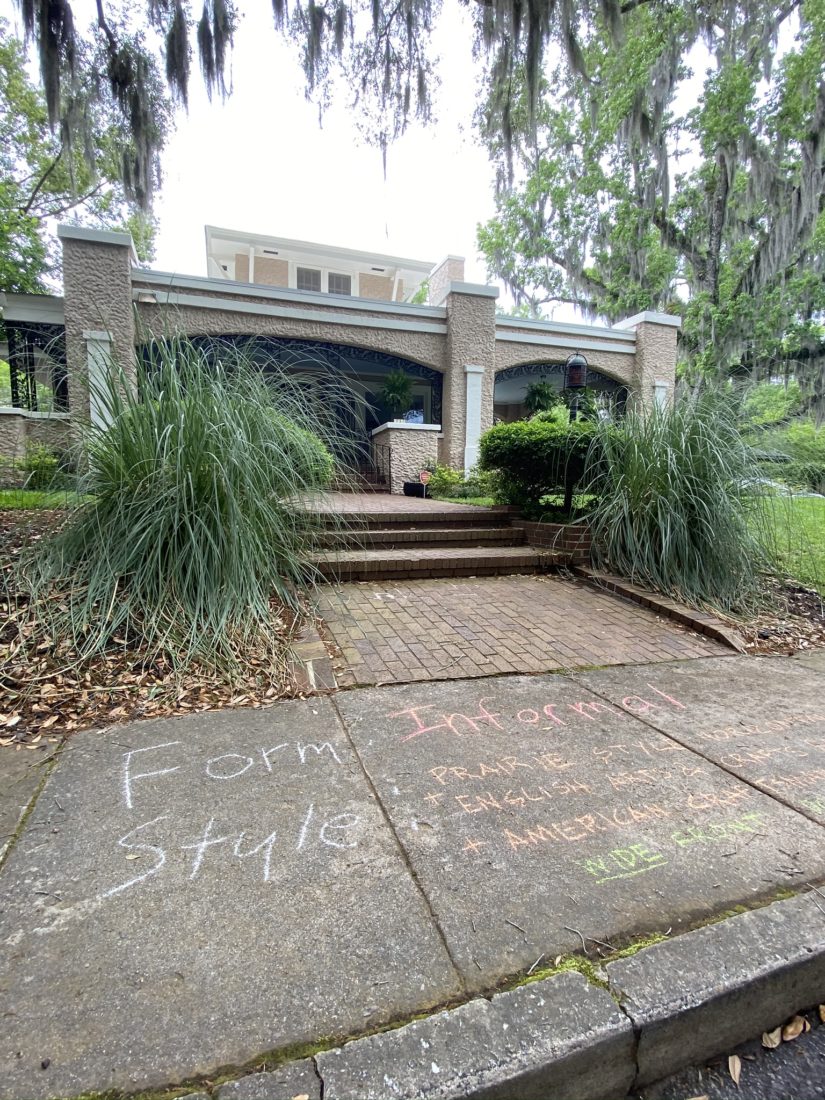
The white colonial-revival bungalow at 220 East 46th Street has an inviting porch, and it features a detail that surprises Williams: columns crafted with a subtle bulge—an illusion called entasis. The ancient Greeks used the technique on the Parthenon’s columns to make them appear straighter, from a distance, Williams says. On the sidewalk, he sketches a bulging column and notes the home’s metal-shingle roof, another significant detail. Other residences on the street are more modest, but still show flashes of subtle styling. “Even a small house can have some really cool, individualistic, notable detail,” Williams says.
Two blocks north and three more east, the denim-blue craftsman bungalow at 532 East 44th Street has “an extraordinary Spanish Baroque porch,” Williams says, with curving, sweeping elements set under a pediment styled in Tudor fashion, with English half-timbering. Ornate wooden brackets support the roof, and the home sits off a still-standing “historic concrete curb.” In neighborhoods like Chatham Crescent, beauty blooms from diversity of style—the “spirit of experimentation,” says Williams—evident in the eclectic homes where Savannahians live.
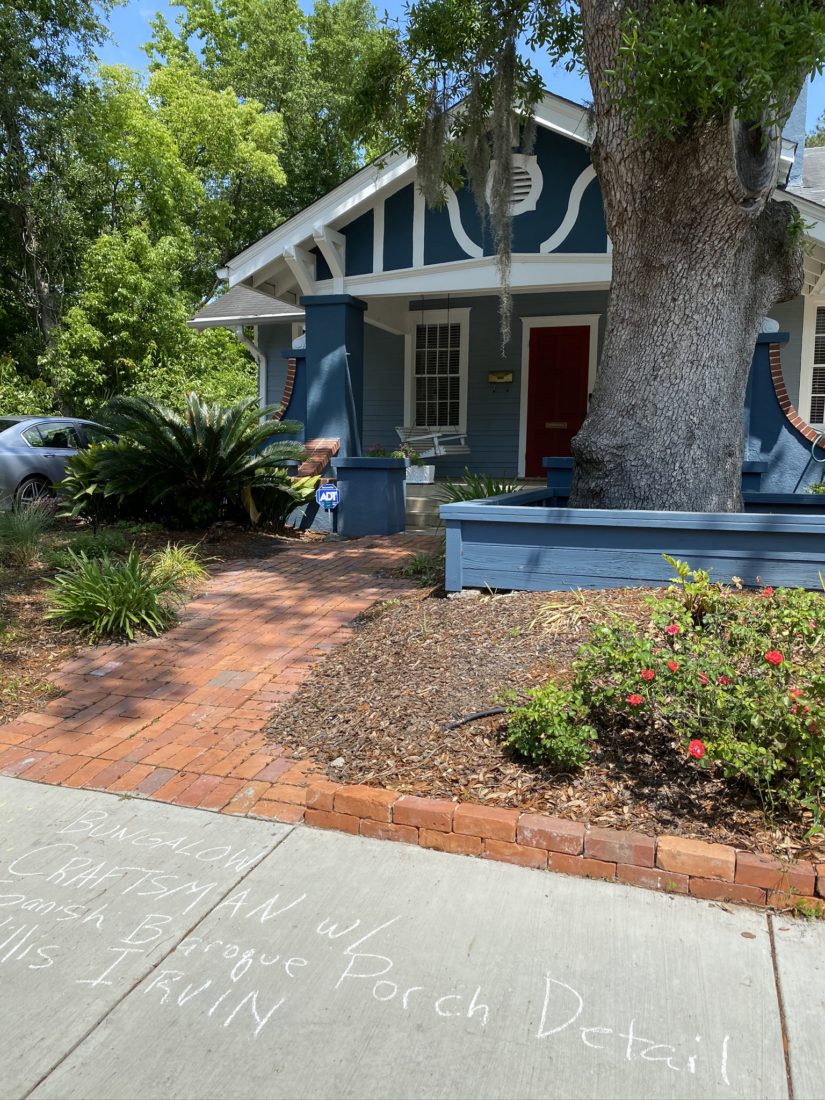
On Tuesday, the crew visited about a dozen properties. A friend resupplied them with chalk just past noon. The trio continued their quest on Thursday, starting just east of Paulsen and 48th Streets. They will carry on through the duration of the pandemic, fitting in trips when they can, averaging about ten homes per hour. Palumbo and Bennett have posted some of their discoveries to a private neighborhood Facebook group, and they hope their neighbors follow along, online and in the streets. Williams, meanwhile, will upload segments to his YouTube channel, Urban Traces, created during the pandemic for SCAD students taking courses online, as well as for the public. Who knows, Bennett says: Maybe the idea will catch on elsewhere across the South. These days are perfect for bike rides, and every day is a fine day to say hi to a neighbor.


